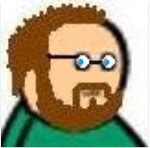
So here's a little theory for you and it's interesting to me that I've googled the life out of this matter and found it nowhere on the interwebs, so perhaps this is an internet scoop as it were: It concerns El Greco's work, Portrait of a Cardinal.
The subject is largely assumed to be Don Fernando Niño de Guevara, Archbishop of Seville and Grand Inquisitor of Spain. This was a fellow with significant clout.
_-_WGA10553.jpg) Take a look at the expression on his face. Does it radiate with the unburdened confidence and clear-mindedness which one surely must possess when one is to competently command the sentencing of 1868 heretics, 240 of them to death by burning? Or does he look a little - I don't know - paranoid?
Take a look at the expression on his face. Does it radiate with the unburdened confidence and clear-mindedness which one surely must possess when one is to competently command the sentencing of 1868 heretics, 240 of them to death by burning? Or does he look a little - I don't know - paranoid?My question is - How much was El Greco responsible for this portrayal. Let's be clear: El Greco, in addition to a great painter, was a great poet. He was not fooled by the tyranny of appearances. Not a word of his poetry was arbitrary or imprecise and I would think the same must be said for each stroke of his brush. What did El Greco wish to say about the Grand Inquisitor?
There are two odd components to this work. One is the unnatural shape of Guevara's left hand which seems to me bestial; claw-like.
And then there is the strange protuberance of his robe just left of his left foot. Fabric doesn't fall that way. I'm sure when Guevara's robes were carefully draped about him this shape did not exist. What do you see in that shape? I know what I see. And El Greco must have been a brave man. Because if the archbishop had interpreted that allusions to a weasel were painted in to his portrait, the artist would have been put to death.










































1 comment:
Hi FWG. I'm presently trying to catch up with my blog patrol after a couple of hours of issues.
Some interesting observations you've got there. As an artist myself, I always wonder about such things as the ratio of head to body with some of those portraits.
When I look at that extended cloak it really worries me ...
Post a Comment